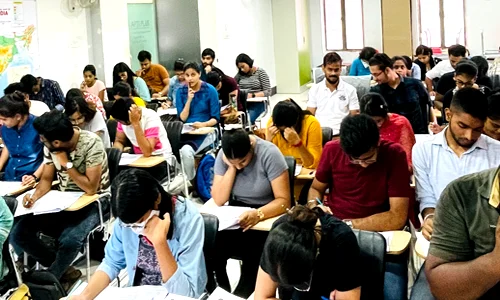



Talks on a Global Plastics Treaty remain stalled as high-ambition countries seek caps on virgin plastic, while major producers favour waste-focused solutions. Disputes over chemicals and finance persist. Japan’s bridge-building role aims to break the deadlock amid worsening environmental and health impacts of plastic pollution.
Click to View MoreThe UNEP's seventh Global Environment Outlook (GEO-7) report presents a dire warning, projecting global temperature rise between 2.4°C and 3.9°C this century, far exceeding Paris Agreement goals. It highlights an interconnected "polycrisis" of accelerated climate change, catastrophic biodiversity loss, widespread land degradation, and escalating pollution.
Click to View MoreAir pollution is now one of the world’s deadliest environmental threats, contributing to nearly nine million premature deaths each year—largely from heart disease, stroke, lung infections, cancer and chronic respiratory conditions. Most of these deaths occur in low- and middle-income countries where exposure to fine particulate matter, toxic gases and waste emissions is persistently high. The latest assessments show that ninety-nine percent of the global population breathes air that exceeds health guidelines, with climate change, wildfires, unmanaged waste and urban congestion intensifying the crisis. This enormous health burden underscores the urgent need for stronger pollution control, cleaner energy transitions and more effective global cooperation.
Click to View MoreCyclone Senyar, the first November cyclone to hit Indonesia, made landfall on Sumatra on November 26, 2025. Formed unusually in the Malacca Strait, it rapidly intensified to 70–90 km/h, highlighting the growing impact of climate change and warming seas on rare regional cyclogenesis.
Click to View MoreUN ESCAP’s 2025 report warns that Asian megacities may experience an additional 2–7°C due to urban heat island effects, with India, Pakistan and Bangladesh facing 300+ days above 35°C. Extreme heat is now the region’s fastest-growing climate hazard, threatening health, livelihoods and economic stability.
Click to View MoreClimate change is increasingly affecting India’s commercial crops through rising temperatures, erratic rainfall, soil degradation, and higher pest incidence. Crops like tea, coffee, rice, wheat, and sugarcane face reduced yields and quality, threatening farmer livelihoods and export competitiveness. Government initiatives such as the National Mission for Sustainable Agriculture, Pradhan Mantri Krishi Sinchayee Yojana, Pradhan Mantri Fasal Bima Yojana, and programs by the Tea and Coffee Boards aim to enhance climate resilience through climate-smart varieties, water management, pest control, and insurance. Adoption of sustainable practices, crop diversification, and technology integration are essential for safeguarding productivity and ensuring long-term agricultural sustainability.
Click to View MoreDust pollution is a significant contributor to deteriorating air quality, mainly arising from construction work, road dust, industrial activities, and natural windblown sources. It increases particulate matter levels, harms human health, disrupts visibility, and affects ecosystems. Effective control requires better regulation, enforcement, dust-suppression measures, greener urban design, and active public awareness.
Click to View MoreNingaloo Reef in Western Australia has lost nearly 70 percent of its coral cover after an unprecedented marine heatwave. Mass death of key corals like Acropora has triggered a shift toward algae and sponges, exposing severe climate vulnerability and demanding urgent conservation and policy action.
Click to View MoreCOP30 adopted the Just Transition Mechanism, a win for developing countries seeking equity in climate action. But the mechanism lacks timelines, clear functions and, crucially, funding from developed nations. Without finance, it risks becoming an empty shell, leaving nations like India without support for a fair energy transition.
Click to View MoreThe GMSR 2025 warns methane emissions could reach 369 Mt by 2030, jeopardizing the Global Methane Pledge. UNEP says a five-year window remains; deep cuts across energy, waste, and agriculture need full technical deployment, strong data, and $127 billion yearly to unlock major climate-health benefits.
Click to View MoreA PLOS Climate update reveals India has warmed by 0.9°C since 1901, leading to intensified Arabian Sea cyclones, rising marine heatwaves, and Himalayan ice loss. Urgent action is needed for adaptation, resilient infrastructure, and climate-smart agriculture to safeguard water security and coastal communities.
Click to View MoreThe Global Energy Leaders’ Summit 2025 in Puri (Dec 5–7), hosted by Odisha and the Tony Blair Institute, focuses on “Powering India: Sufficiency, Balance, Innovation.” It supports India’s pillars of energy access, efficiency, sustainability, and security while advancing cooperation, clean energy transition, technology, and Net-Zero 2070 goals.
Click to View More
© 2025 iasgyan. All right reserved